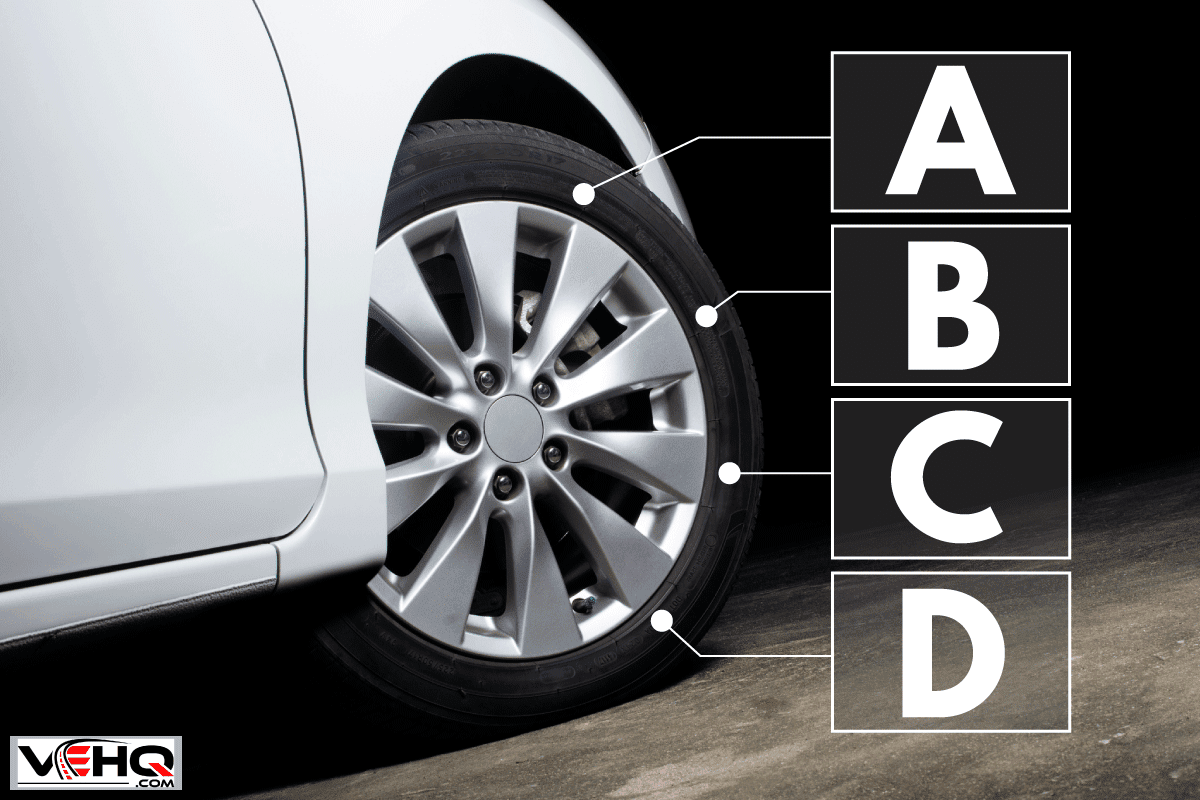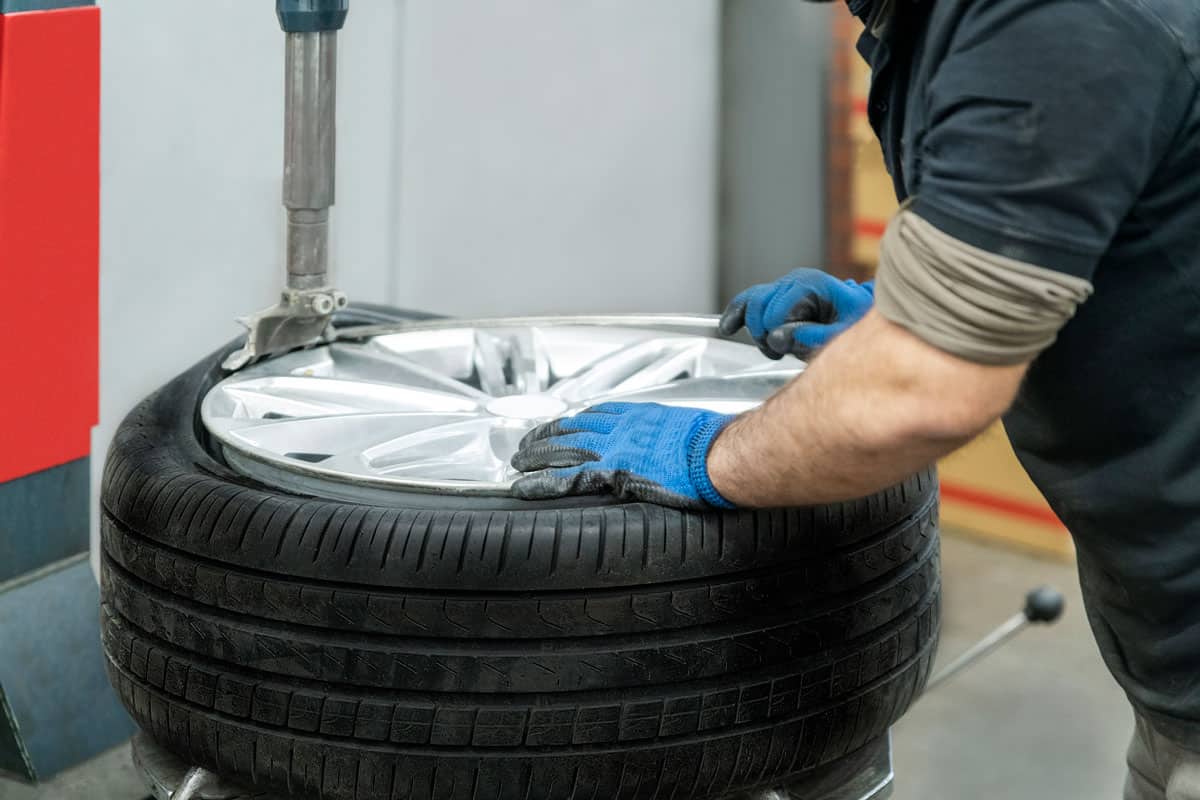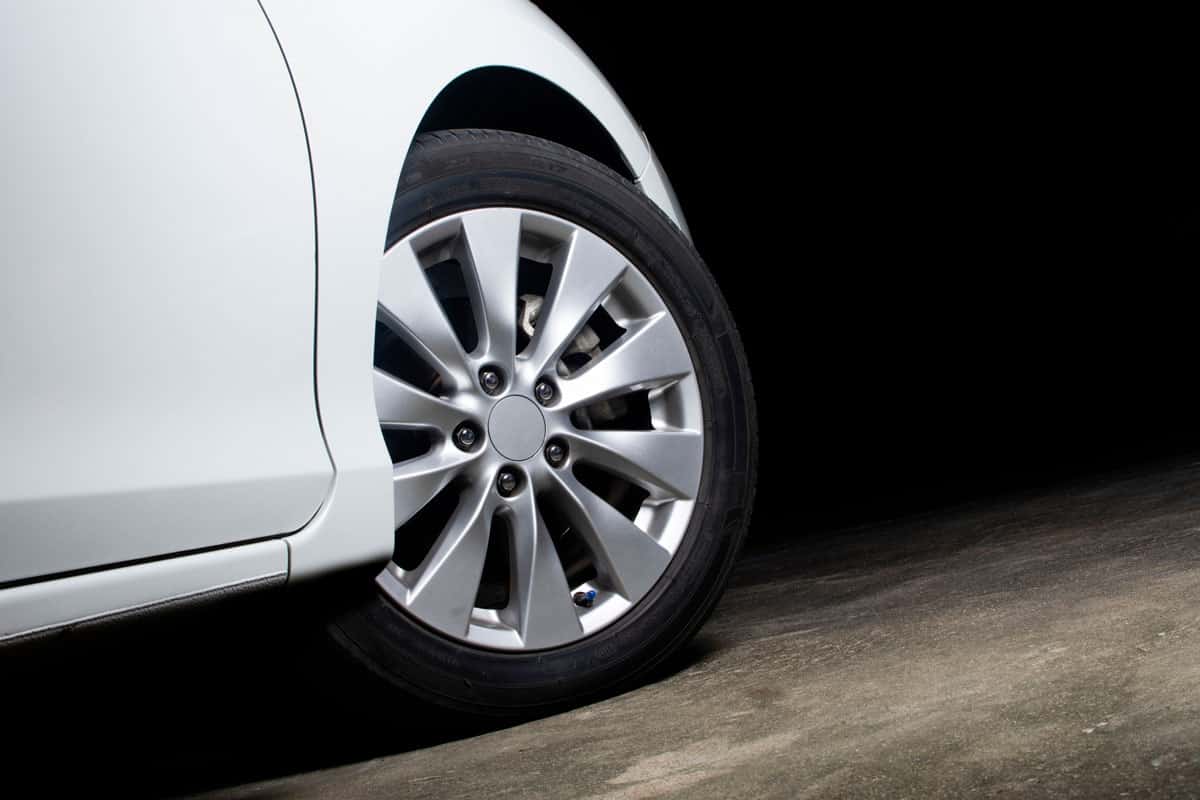Tire rotation is important to encourage even wear. But you might want to mark your tires before having them rotated to ensure proper rotation. But how can you mark your tires for rotation? We researched this concern for your convenience and here’s what we found.
Marking tires for rotation generally fall under personal preference. For example, you can mark your tires with the letters 'A,' 'B,' 'C,' and 'D.' Another example is to write words on them, such as 'front tire' and 'rear tire.'
Although the marking part of the process isn't restrictive, the tire rotation operation generally demands careful tire handling. Continue reading as we tackle the proper way to rotate your tires using DIY methods. We’ll also discuss marking your tires for rotation in greater detail.

How Do You Mark Tires To Make Sure They Are Rotated?
The way you mark your tires to ensure they have correct rotation often falls under preference. You can put an arrow, an ‘X,’ or even alphanumeric symbols on your tires. Other options may include writing whole words or phrases on the edges of the wheels to verify if the tires achieved proper rotation.

But it can be easy to forget which side you placed the marking. So it’s ideal to take before-and-after pictures of the tire rotation process.
How Do You Rotate Tires At Home?

Car tire rotation operations are relatively DIY-friendly jobs, as long as you have the right tools for the job. Also, ensure that you have the confidence to continue with this task. Otherwise, there’s no shame in requesting help from professional automotive care services.
If you wish to continue rotating your car’s tires at home, follow these steps:
What You’ll Need
- Car jack
- Jack stands
- Lug wrench
- Microfiber cloths
Step-by-Step Guide
Step #1: Mark Your Tire
Mark your tire or wheel. Then, take a picture of your tire with your smartphone’s camera. That way, you can verify the results of this task after its completion.
Step #2: Identify The Type Of Tire On Your Car
Check your owner’s manual if you have a directional or non-directional tire. Otherwise, check for markings on your tires to identify their types. Take note that the rotation method may depend based on the type of tire on your vehicle.
If your vehicle has directional tires, you can only rotate them in one direction. On the other hand, non-directional tires might provide more flexible rotation operations than their directional counterparts.
Step #3: Park The Car
Park the car under a shaded area. Also, ensure that it’s on level ground, particularly on a flat concrete surface. Engage the emergency, hand, or parking brake afterward.
Step #4: Loosen The Lug Nuts And Lift The Vehicle
Use the lug wrench to loosen the lug nuts on the wheels. However, don’t remove these fasteners yet.
Then, raise the vehicle with the car jack. Make sure you don’t make the mistake of lifting your car with the jack from a random position. You should be able to find a place on the car’s chassis that indicates the correct placement for the jack.
Stop raising the car until the front tires are slightly off the ground. Secure this setup by placing the jack stands under the car.
Step #5: Remove And Rotate The Tires
Remove the front and rear tires on one side of the vehicle. Swap their positions afterward. The results you’re looking for from this step is that the tire that was previously at the front will now be at the vehicle’s rear.
Ensure that you push the tires into place so that they’re secure. Then, use your fingers to tighten the lug nuts.
Lower the vehicle using the jack and remove the jack stands. Once your car is on the ground, use the lug wrench again to secure the lug nuts. Repeat steps 4 and 5 for the other side of the car.
Check out these jack stands on Amazon.
Watch the video below to see a visual representation of this procedure:
What Happens If Tire Rotation Is Wrong?
Remember, you can’t change the direction of the rotation of directional tires, unlike what you can do with non-directional models. Uneven wear can occur if you change the direction of directional tires.
Also, you’ll be at risk of getting into accidents and injuries if you rotate your tires incorrectly. Take note that incorrect rotations on directional tires can also cause misalignments. Driving over potholes and rough terrain can knock off the tires easily, leading to those unfortunate events.
Can I Rotate My Own Tires Without Balancing Them?
Although it’s not a requirement to balance your car’s tires upon rotating them, it’s a good practice to service your tires with these two tasks instead of only applying one. Keep in mind that balancing your tires can promote different benefits, such as:
Smooth Ride
Unbalanced tires typically don’t provide a smooth ride. Driving a car without balancing your tires might make you and your passengers experience bumpy rides even when passing through relatively flat roads.
Enhanced Life Expectancy
Generally, tires last 36,000 to 45,000 miles or 3 to 5 years before you need to replace them. But by being a careful car owner, you can extend the life of your vehicle’s tires by balancing them. Doing so may reduce unnecessary strain on the tires, which should help increase their life expectancy.
Safeguard The Suspension
Another drawback of driving with unbalanced tires is the additional stress they give to the suspension. The extra vibrations caused by the imbalance can bring harm to the suspension. Failure to correct this concern may also lead to the car’s suspension system breaking down, which can be quite expensive to repair.
Better Mileage
You might experience that you’re spending more money on gas than usual. If so, it might be because your tires need balancing. Balanced tires may help in providing your car with enhanced gas mileage by ensuring proper weight distribution across its frame.
You can find out more about the importance of tires needing balancing after being rotated in our post highlighting this topic.
How Long Will Tires Last If You Don't Rotate Them?

If you don’t rotate your tires, they might not last more than 7,500 miles or 6 months. Without following a strict tire-rotation schedule, your vehicle can be at risk of certain hazards like:
Unnecessary Heat Buildup
Vehicles often become subject to friction while they’re being driven. If tires lack or have an absence of rotation, the car may garner additional heat from the increased friction. These instances can lead to events like blowouts, flat tires, and tread separations.
Poor Traction
Aside from increased friction, non-rotated tires can also lead to poor traction, particularly when driving on ice and snow. The irregularity that causes the uneven wear can misshape the treads, causing driving experiences in the winter to be more hazardous than expected.
Hydroplaning
Also called aquaplaning, hydroplaning occurs when the tires can’t maintain a firm grip on wet roads. Failure to rotate your car’s tires may cause this dangerous event to happen, which can cause you to lose control of your vehicle while driving on damp terrain.
How Much Does A Tire Rotation Service Cost?
Expect to spend money around $24 to $50 to rotate your tires. However, the expenses may reach up to about $120 if your tires need additional services. Some of these extra care practices may include tire balancing and tire tread inspections.
Where Is The Directional Arrow On A Tire?
Directional tires often have arrows pointing to the front of the vehicle. It’s important to mount the tires based on the direction of the arrow to avoid issues like reduced hydroplaning resistance.
How Do You Tell If Your Tires Are Directional Or Non-Directional?

Perhaps the simplest way to find out if a tire is directional or not is to look at its sidewall. Directional tires often have a rotation indicator in this location, which typically looks like an arrow or a similar symbol.
Aside from searching for that mark, another way to check if your tire is directional is to look at its tread design. Directional tires generally use flow-like tread patterns that point to the front of the vehicle.
Find out more if car tires are directional or non-directional by reading our post on that particular subject matter.
Check out these directional tires for ATVs on Amazon.
Final Words

You can mark your tires that are due for rotation in relatively any way you want. One example is to place letters on them. Otherwise, you can put arrows, numbers, or entire sentences on your tires so you can keep track of their rotations.


